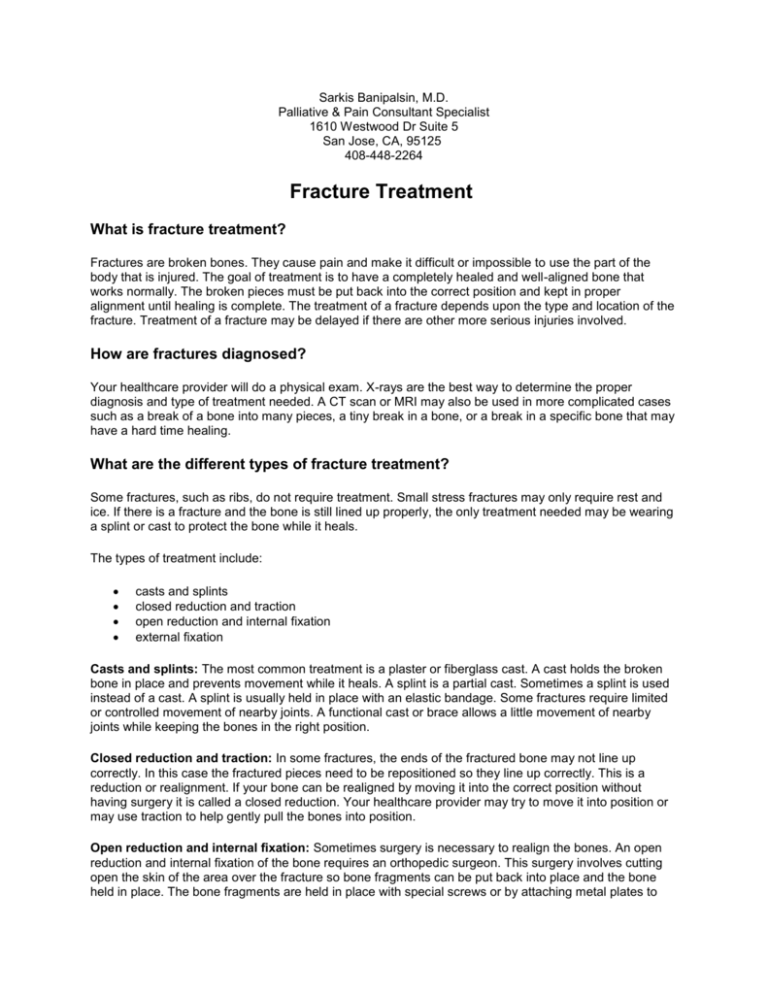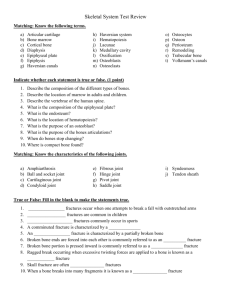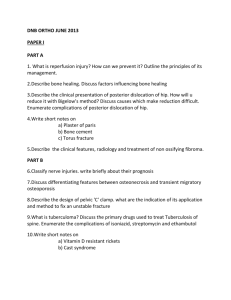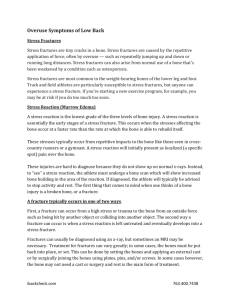
Sarkis Banipalsin, M.D.
Palliative & Pain Consultant Specialist
1610 Westwood Dr Suite 5
San Jose, CA, 95125
408-448-2264
Fracture Treatment
What is fracture treatment?
Fractures are broken bones. They cause pain and make it difficult or impossible to use the part of the
body that is injured. The goal of treatment is to have a completely healed and well-aligned bone that
works normally. The broken pieces must be put back into the correct position and kept in proper
alignment until healing is complete. The treatment of a fracture depends upon the type and location of the
fracture. Treatment of a fracture may be delayed if there are other more serious injuries involved.
How are fractures diagnosed?
Your healthcare provider will do a physical exam. X-rays are the best way to determine the proper
diagnosis and type of treatment needed. A CT scan or MRI may also be used in more complicated cases
such as a break of a bone into many pieces, a tiny break in a bone, or a break in a specific bone that may
have a hard time healing.
What are the different types of fracture treatment?
Some fractures, such as ribs, do not require treatment. Small stress fractures may only require rest and
ice. If there is a fracture and the bone is still lined up properly, the only treatment needed may be wearing
a splint or cast to protect the bone while it heals.
The types of treatment include:
casts and splints
closed reduction and traction
open reduction and internal fixation
external fixation
Casts and splints: The most common treatment is a plaster or fiberglass cast. A cast holds the broken
bone in place and prevents movement while it heals. A splint is a partial cast. Sometimes a splint is used
instead of a cast. A splint is usually held in place with an elastic bandage. Some fractures require limited
or controlled movement of nearby joints. A functional cast or brace allows a little movement of nearby
joints while keeping the bones in the right position.
Closed reduction and traction: In some fractures, the ends of the fractured bone may not line up
correctly. In this case the fractured pieces need to be repositioned so they line up correctly. This is a
reduction or realignment. If your bone can be realigned by moving it into the correct position without
having surgery it is called a closed reduction. Your healthcare provider may try to move it into position or
may use traction to help gently pull the bones into position.
Open reduction and internal fixation: Sometimes surgery is necessary to realign the bones. An open
reduction and internal fixation of the bone requires an orthopedic surgeon. This surgery involves cutting
open the skin of the area over the fracture so bone fragments can be put back into place and the bone
held in place. The bone fragments are held in place with special screws or by attaching metal plates to
the bone. Pins that go through the bone or rods that go inside the length of the bone are also used to
keep the bone in place.
External fixation: External fixation is another way to treat a fracture. It is done without making a cut.
First, a closed reduction is done to move the bones in place. Next, pins or screws are put through the skin
and bone above and below the fracture. These are connected to metal bars on the outside of the skin to
form a frame around the fracture. This frame keeps the bone pieces in place. When the healing is
complete, the fixation device is removed.
Exercises are usually needed during and after the healing process. They help to make the muscle strong
and flexible, and help the joint move.
What are the complications of fracture treatment?
Most fractures heal without problems. It is important to follow your provider's instructions. A properly
healed bone will work normally without pain.
Some complications of fracture treatment are:
muscle weakness around the fracture site
increased pain around the fracture site
stiffness in the joints near the fracture site
When should I contact my healthcare provider?
Contact your healthcare provider if you experience any of the following signs or symptoms while wearing
a cast or being treated for a fracture:
numbness or tingling in the part of the body affected by the fracture
fever or chills
discoloration of fingers or toes around the cast site
areas of the cast that become worn or broken down
increased pain
Written by Lee Mancini, MD., CSCS.
Published by RelayHealth.
Last modified: 2010-07-27
Last reviewed: 2009-07-01
This content is reviewed periodically and is subject to change as new health information becomes available. The information is
intended to inform and educate and is not a replacement for medical evaluation, advice, diagnosis or treatment by a healthcare
professional.
References
Adult Advisor 2011.1 Index
© 2011 RelayHealth and/or its affiliates. All rights reserved.









